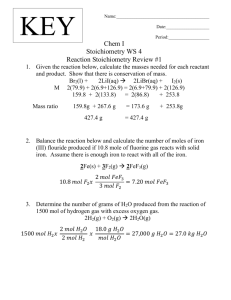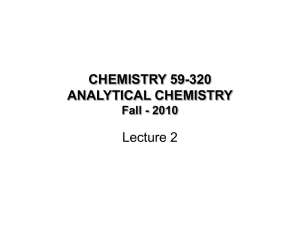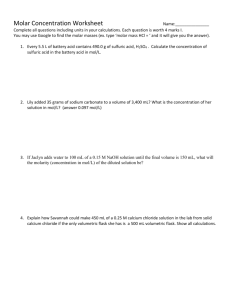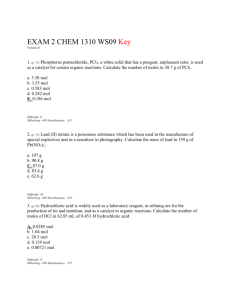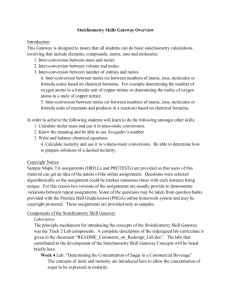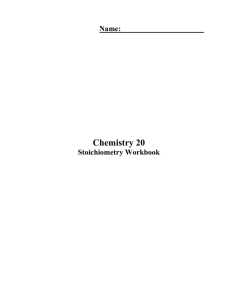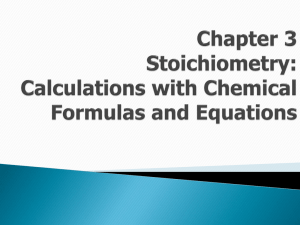SolutionStoich_Printable
advertisement
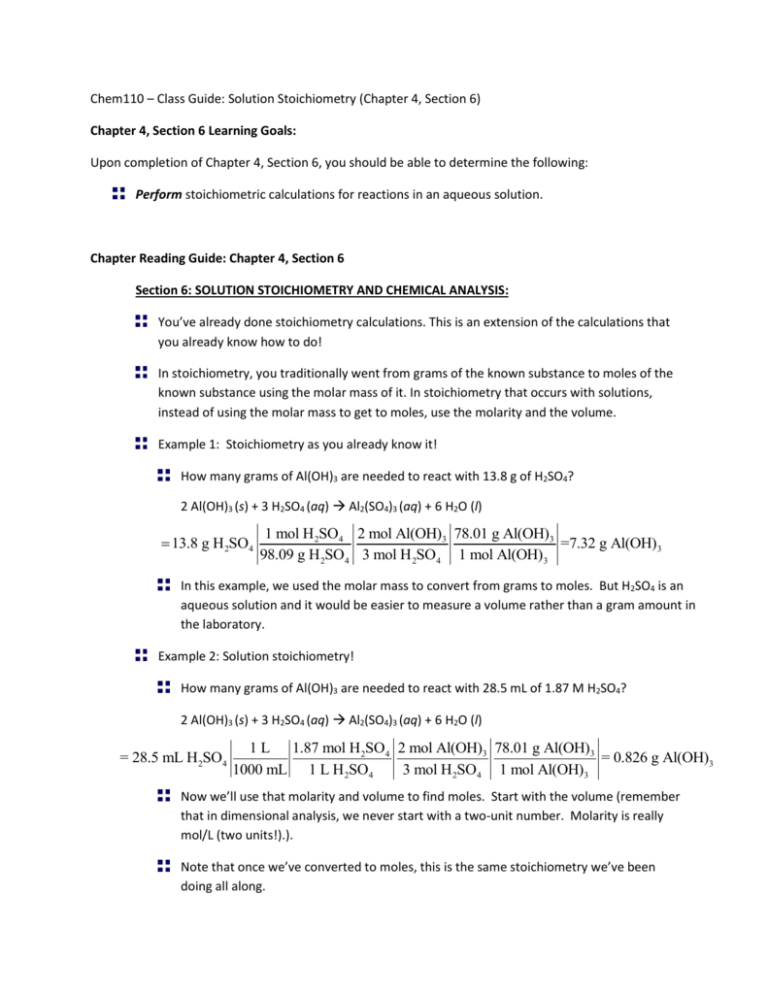
Chem110 – Class Guide: Solution Stoichiometry (Chapter 4, Section 6) Chapter 4, Section 6 Learning Goals: Upon completion of Chapter 4, Section 6, you should be able to determine the following: Perform stoichiometric calculations for reactions in an aqueous solution. Chapter Reading Guide: Chapter 4, Section 6 Section 6: SOLUTION STOICHIOMETRY AND CHEMICAL ANALYSIS: You’ve already done stoichiometry calculations. This is an extension of the calculations that you already know how to do! In stoichiometry, you traditionally went from grams of the known substance to moles of the known substance using the molar mass of it. In stoichiometry that occurs with solutions, instead of using the molar mass to get to moles, use the molarity and the volume. Example 1: Stoichiometry as you already know it! How many grams of Al(OH)3 are needed to react with 13.8 g of H2SO4? 2 Al(OH)3 (s) + 3 H2SO4 (aq) Al2(SO4)3 (aq) + 6 H2O (l) 13.8 g H 2SO4 1 mol H 2SO4 2 mol Al(OH)3 78.01 g Al(OH)3 =7.32 g Al(OH)3 98.09 g H 2SO4 3 mol H 2SO4 1 mol Al(OH)3 In this example, we used the molar mass to convert from grams to moles. But H2SO4 is an aqueous solution and it would be easier to measure a volume rather than a gram amount in the laboratory. Example 2: Solution stoichiometry! How many grams of Al(OH)3 are needed to react with 28.5 mL of 1.87 M H2SO4? 2 Al(OH)3 (s) + 3 H2SO4 (aq) Al2(SO4)3 (aq) + 6 H2O (l) = 28.5 mL H 2SO4 1 L 1.87 mol H 2SO4 2 mol Al(OH)3 78.01 g Al(OH)3 = 0.826 g Al(OH)3 1000 mL 1 L H 2SO4 3 mol H 2SO4 1 mol Al(OH)3 Now we’ll use that molarity and volume to find moles. Start with the volume (remember that in dimensional analysis, we never start with a two-unit number. Molarity is really mol/L (two units!).). Note that once we’ve converted to moles, this is the same stoichiometry we’ve been doing all along. Skip the section: “Titrations”, you’ll do this in the laboratory. You’ll see some questions that have the word “titrate” in them, but that’s just another name chemists use for solution stoichiometry. Complete Practice Exercises 4.15, 4.16 and 4.17 (even though those last two are in the titration section!). This is a challenging topic, but you should begin to see similarities in the way you solve the problems. Learning Resources Chapter Learning Goals Chapter 4, Section 6 Learning Goals Pre Class Assignment: This assignment must be completed prior to the next class. Check your syllabus for the exact due date and time. Complete the pre class assignment (http://berks.psu.edu/clt/chem110/SolutionStoich_HW.doc) Submit a copy to the dropbox located in ANGEL called “Pre Class Assignment Submission: Solution Stoichiometry” End of Chapter Problems: Practice with these problems if you are having difficulty with any of the concepts covered in this class guide AFTER we have met in class. If you cannot easily complete these problems, seek help from your instructor, your mentor, or the learning center. Chapter 4: 79, 81, 83, 87, 109 (part a only)



